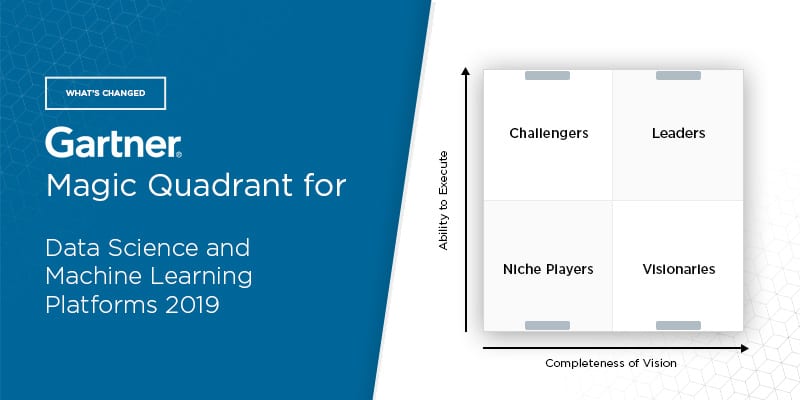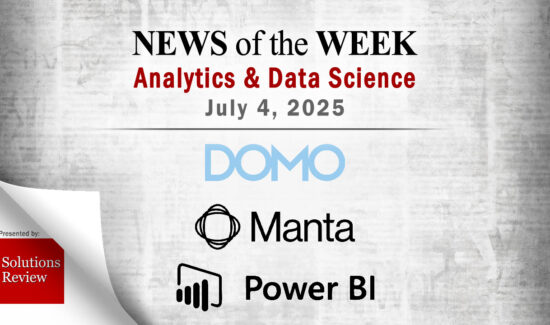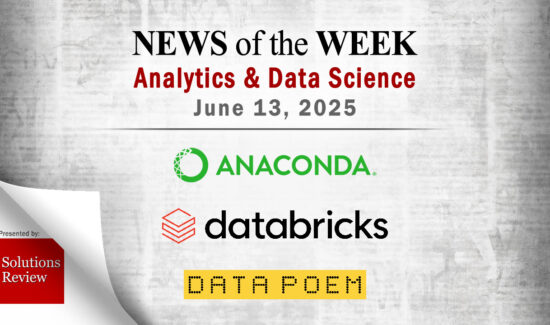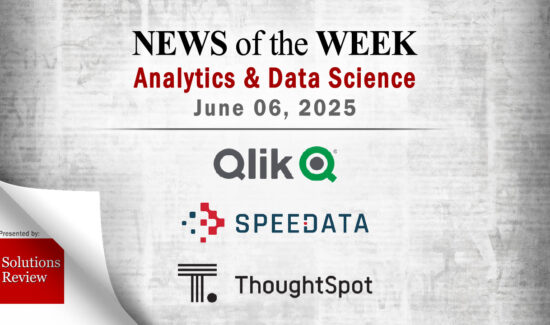What’s Changed: 2019 Gartner Magic Quadrant for Data Science and Machine Learning Platforms


Analyst house Gartner, Inc. recently released the 2019 version of its Magic Quadrant for Data Science and Machine Learning Platforms. Gartner defines this software space as enabling “expert data scientists, citizen data scientists and application developers to create, deploy and manage their own advanced analytic models.” The market is seeing rapid changeover as vendors incorporate a wide array of technologies and product capabilities into their platforms. Data science and machine learning software incorporates things like data ingestion, data preparation, data discovery and advanced modeling, testing and deployment.
The researcher notes that machine learning is the most popular singular focus for these platforms, as many buyers need assistance with building data science models. Gartner recommends that each provider be assessed for machine learning independently. As a result, products that are not cohesive and mostly use bundle packages and libraries are not considered true data science and machine learning platforms and are omitted from this analysis. So too are open-source platforms, as the researcher chose only to include those vendors with commercially licensable products.
The data science market features perhaps the most diverse range of solution providers of any data-centric industry. This is definitely purposeful, as use cases and requirements vary from organization to organization with some needing a more augmented approach via machine learning to build and model. Other providers offer more advanced functionality aimed at expert users. However, Gartner notes that the augmented approach may begin to gain steam there as well so data scientists can more efficiently navigate the model-building process.
In Gartner’s report notes, they highlight that market leaders “may not be the best choice.” We applaud this sentiment, as it means that vendor placement isn’t the most important thing readers should take away. The diversity of solution providers and the capabilities offered make it more important than ever for buyers to consider only the tools and products that best line up with their environments and end-goals. It’s true too that different users (citizen data scientist, line-of-business, corporate teams) are likely to have different needs, and this is a key differentiator for a number of the products covered in the study.
Gartner adjusts its evaluation and inclusion criteria for Magic Quadrants as software markets evolve. As a result, Google, DataRobot and Datawatch (Angoss) have been added to the report. Teradata was removed because it is currently remodeling its data science and machine learning platform.
In this Magic Quadrant, Gartner evaluates the strengths and weaknesses of 17 providers that it considers most significant in the marketplace, and provides readers with a graph (the Magic Quadrant) plotting the vendors based on their ability to execute and their completeness of vision. The graph is divided into four quadrants: niche players, challengers, visionaries, and leaders. At Solutions Review, we read the report, available here, and pulled out the key takeaways.
If one thing speaks to the continued evolution in this space, it’s the change in vendor positioning on the Magic Quadrant. Numerous providers changed columns and the spread of providers covers a large swath of the graphic. After KNIME was downgraded on the vertical axis, RapidMiner has seized the top spot in the middle-left portion of the leaders space. RapidMiner was a top scorer in the researcher’s late-2018 Customer Choice Awards, and it’s always good to see user sentiment match up with Gartner’s analysis.
TIBCO Software is breathing down RapidMiner’s back, with a strong standing just to the top dog’s southwest. TIBCO made notable gains on Gartner’s horizontal ‘completeness of vision’ axis due to a growing and strong product portfolio that houses all of the company’s data and advanced analytic functionality. TIBCO’s data science offering is both comprehensive and easy to use, and features an impressive set of connectors and APIs for machine data capture and model scoring. SAS rounds out the leader column, and though its position was better last year, offers a large presence in the space and an integrated interface that houses its data management capabilities.
Though Alteryx lost its spot in the leaders column, Gartner upgraded the company’s vertical standing for ability to execute. With a focus on making advanced analytics more readily available to citizen data scientists, Alteryx remains a formidable player and one that could return to leader status at a moment’s notice. The same goes for Dataiku after having improved its position more than any other vendor in this space. Now a market challenger and positioned on the boundary line with the other leaders, Dataiku’s area of expertise is real-time analytics. The company offers an easy-to-use product that allows true collaboration across many data science personas.
The visionaries bracket is headlined by MathWorks, the owner of numerical computing environment and programming language MATLAB. Now within a stone’s throw of the leader column, the company’s data preparation functionality and advanced deep learning models and embedded real-time analytics make it one of the stronger products in the space. Former market leader H2O.AI and Databricks are hot on MathWorks’ heels for notoriety in this column, with the former offering open-source machine learning components that are the industry standard. Databricks offers end-to-end analytics lifecycle support and accessibility for a variety of data science users.
SAP’s standing as a niche player has seen better days, as the German-based predictive analytics provider is being challenged by other up-and-coming providers in the space. One of these providers is Domino (Domino Data Lab). Although its standing was also downgraded considerably, this is due in large part to its continued focus and success serving the expert data science community. Domino is definitely one of the vendors that buyers should heed Gartner’s earlier advice on, and consider them for what they are rather than their position on the Magic Quadrant.































